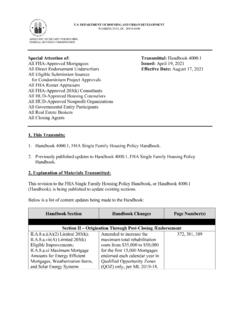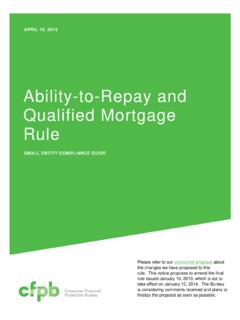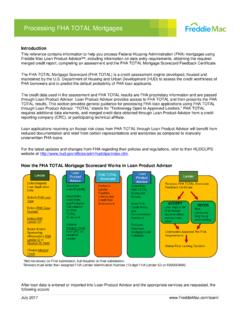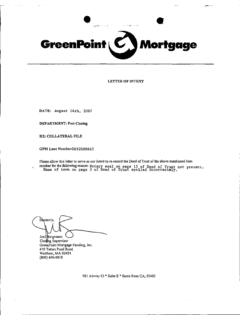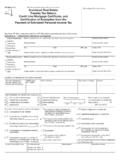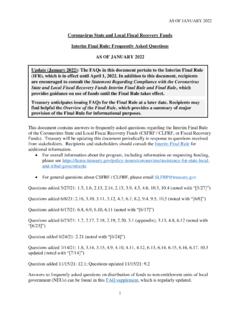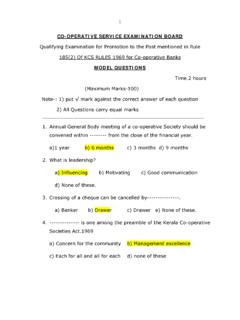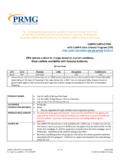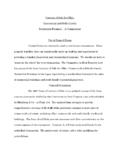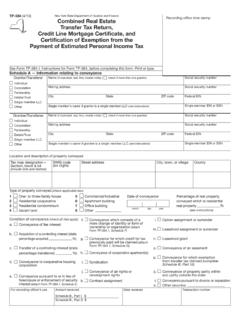Transcription of SECTION 85 – SAMPLE PROBLEMS
1 SECTION 85 SAMPLE PROBLEMS problem 1 Jenny developed a new product that she now sells through a number of retail stores. Over the years, since she started the business, she has grown to 5 stores. Jenny owns the land and building of each of the stores. She also has a distribution center. A few years ago, she acquired a parcel of vacant land next to one of her retail stores that she thinks will appreciate in value. Jenny is a resident of Canada and all of the stores and the distribution center are located in Canada. A recent balance sheet for Jenny s business includes the following items: Jenny s Business Balance Sheet Assets Liabilities Cash Accounts Payable Accounts receivable Line of Credit Inventory Mortgages Land inventory Other Long Term Liabilities Machinery and equipment Computers and office furniture Land Jenny has determined that she wants to transfer the business to a new Canadian corporation ( Opco ) on a tax-deferred basis.
2 Question 1 Jenny has asked whether she can transfer all of the assets to Opco on a rollover basis under subsection 85(1) or whether there are any assets that are not eligible for rollover treatment? Answer: The land inventory is not eligible for rollover treatment by virtue of paragraph 85( )(f). Trade receivables are generally considered to be capital property of a business and and therefore should be eligible property. See the comments below relating to the application of a SECTION 22 election. Question 2 Jenny has asked whether the fact that the land inventory cannot be transferred on a rollover basis taints the rollover for other assets. Answer: The subsection 85(1) election is made on an asset-by-asset basis.
3 The fact that some assets cannot be transferred on a rollover basis or the fact that a taxpayer chooses not to make an - 2 - election in respect of some assets that are eligible for the rollover, does not taint the eligibility of other assets for the rollover. Question 3 Jenny now understands that she can make an election in respect of the other assets listed above, namely, accounts receivable, inventory, land (other than the land inventory), machinery and equipment and computers and office equipment. She is thinking of getting the subsection 85(1) election form off the internet and preparing it herself and she has asked you whether this list is suitable and complete. Please advise. Answer: The list of assets is not complete.
4 A balance sheet does not always list all of the assets of a business. For example, items that do not have a cost may not be shown on a balance sheet. These may have significant value and an election should be made in respect of these assets (with an elected amount of $1). Examples may include goodwill (including customer lists), trademarks and patents. If Jenny is running a successful business, it is likely that there is goodwill attached to her business in respect of which she should make an election. Jenny may also not want to make an election in respect of some assets that are eligible for rollover treatment. Where all or substantially all of the property (including accounts receivable) used in carrying on a business is being sold, it may be preferable to make an election under SECTION 22 rather than under subsection 85(1) in respect of the transfer of the accounts receivable.
5 If an election under SECTION 22 is made, the vendor is entitled to a deduction equal to the discount at which the accounts are sold and the purchaser may be entitled to future allowances for doubtful or bad debts. An election under subsection 85(1) in respect of accounts receivable precludes the use of a SECTION 22 election in respect of the transfer of the receivables. Question 4 Jenny is proposing to transfer the business to Opco and taking back debt as the sole consideration on the transfer. Please advise. Answer: Jenny needs to receive consideration that includes shares of Opco for the transfer to be eligible for rollover treatment under subsection 85(1). Additionally, as discussed below, Jenny would be required to recognize a gain or income to the extent that the debt received for a particular asset exceeds the cost amount of that asset.
6 Question 5 Suppose that one of the properties (the land portion) to be transferred was acquired for $1m, is encumbered by a mortgage of $900k and has a current fair market value of $ Jenny is proposing to transfer this land (subject to the mortgage) to Opco. In addition to Opco assuming the mortgage of $900k, suppose the following alternatives as the consideration to be received by Jenny (a) only common shares of Opco, (b) a note of $100k and common shares of Opco, (c) a note of $200k and common shares of Opco, (d) a note of $600k and common shares of Opco and (e) a note of $700k and common shares of Opco. In each scenario, what is the range of elected amounts? In each scenario, what is the gain realized by Jenny assuming the minimum elected - 3 - amount?
7 Which example demonstrates the maximum non-share consideration that Jenny can receive without triggering a gain? Answer: With respect to the transfer of capital property: (i) the elected amount cannot exceed the fair market value of the transferred property at the time of the transfer (paragraph 85(1)(c)); (ii) subject to (i), the elected amount cannot be less than the fair market value of the non-share consideration received by the transferor (paragraph 85(1)(b)); (iii) the elected amount cannot be less than the lesser of the fair market value of the transferred property at the time of transfer and the cost amount of the transferred property to the transferor (paragraph 85(1)( )); and (iv) subject to (i), where the amount in (ii) and (iii) are different, the lower limit on the elected amount is the greater of the amounts in (ii) and (iii) (paragraph (85(1)( )).)
8 In this case, these amounts are: (i) $ (paragraph 85(1)(c)); (ii) varies in each scenario, as follows (a) $900k, (b) $1m, (c) $ , (d) $ , and (e) $ (paragraph 85(1)(b)); and (iii) $1m (paragraph 85(1)( )). (a) Jenny receives only common shares of Opco: This scenario demonstrates that the lesser of the cost amount and fair market value of the transferred property (paragraph 85(1)( )) will set the lower limit of the elected amount if such amount exceeds the amount of the non-share consideration (paragraphs 85(1)(b) and ( )). The permitted elected amounts are between $1m (paragraph 85(1)( )) and $ (paragraph 85(1)(c)). If the elected amount is $1m, Jenny will not realize a gain or loss. This example also demonstrates that a loss cannot be generated on the transfer.
9 (b) Jenny receives a note of $100k and common shares of Opco: This scenario demonstrates the maximum non-share consideration that Jenny can receive without realizing a gain. The permitted elected amounts are between $1m (paragraphs 85(1)(b) and ( )) and $ (paragraph 85(1)(c)). If the elected amount is $1m, Jenny will not realize a gain or loss. The $100k note and the $900k assumed mortgage (total of $1m) is the maximum non-share consideration that Jenny can receive without realizing a gain. (c) Jenny receives a note of $200k and common shares of Opco: This scenario demonstrates that the amount of the non-share consideration (paragraph 85(1)(b)) will set the lower limit of the elected amount if such amount exceeds the lesser of the cost amount and fair market value of the transferred property (paragraphs 85(1)( ) and ( )).
10 The permitted elected amounts are between $ (paragraph 85(1)(b)) and $ (paragraph 85(1)(c)). If the elected amount is $ , Jenny will realize a gain of $100k. - 4 - (d) Jenny receives a note of $600k and common shares of Opco: Again, the amount of the non-share consideration (paragraph 85(1)(b)) will set the lower limit of the elected amount if such amount exceeds the lesser of the cost amount and fair market value of the transferred property (paragraphs 85(1)( ) and ( )). The only permitted elected amount is $ (paragraphs 85(1)(b) and (c)). Jenny will realize a gain of $500k. (e) Jenny receives a note of $700k and common shares of Opco: This scenario demonstrates that the elected amount can never be more than the fair market value of the transferred property (paragraph 85(1)(c)).
